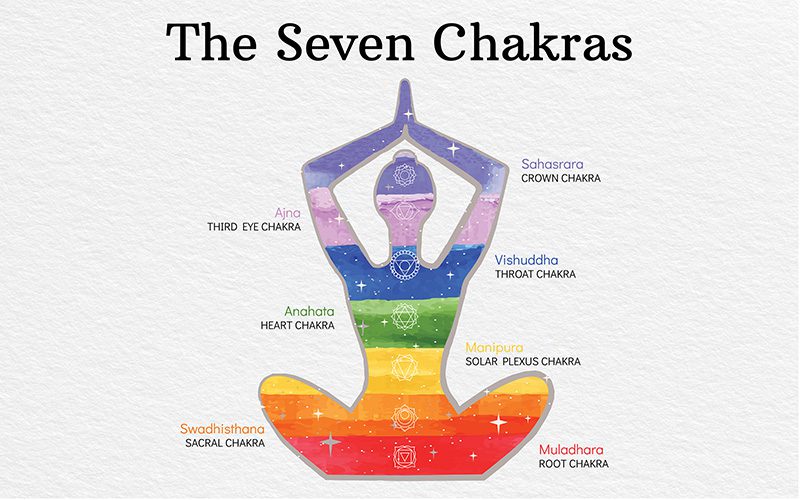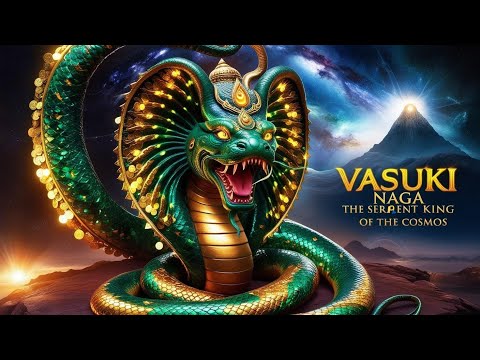Vasuki, the legendary serpent, holds a profound place in Hindu mythology and spirituality. While many recognize it as the snake used during the churning of the Ocean of Milk, its true significance extends far beyond mythology. Spiritually, Vasuki symbolizes the journey of Kundalini energy rising through the spinal cord, unlocking divine potential.
In this blog, we explore Vasuki’s deeper meaning, its connection to human consciousness, and how dedicated yogic practices can lead to spiritual enlightenment.
Vasuki in Hindu Mythology
Vasuki is depicted as the great serpent coiled around Lord Shiva’s neck, signifying both protection and transformation. In the myth of Samudra Manthan (Churning of the Ocean), Vasuki was used as a churning rope by the Devas (gods) and Asuras (demons) to extract the divine nectar (Amrita). This story metaphorically represents the struggle between higher and lower energies within us, emphasizing the need for balance and inner purification.
The Spiritual Meaning of Vasuki
Beyond mythology, Vasuki represents the Kundalini Shakti, the dormant spiritual energy residing at the base of the spine. This energy, often symbolized as a coiled serpent, must be awakened through yoga, meditation, and compassion. As it rises through the chakras, it purifies the body and mind, ultimately leading to self-realization and divine consciousness.
Even in modern medicine, the Rod of Asclepius, a symbol featuring a snake coiled around a staff, is used to represent healing. This connection suggests that the spine holds the key to both physical and spiritual well-being.
Awakening the Kundalini: The Journey Within
The ultimate goal of all yogic practices is to awaken the Kundalini energy and allow it to ascend through the spine. This journey follows a structured path through the seven chakras, each representing different aspects of consciousness:
- Muladhara (Root Chakra) – Stability and survival
- Swadhisthana (Sacral Chakra) – Creativity and emotions
- Manipura (Solar Plexus Chakra) – Willpower and confidence
- Anahata (Heart Chakra) – Love and compassion
- Vishuddha (Throat Chakra) – Truth and expression
- Ajna (Third Eye Chakra) – Intuition and insight
- Sahasrara (Crown Chakra) – Divine connection and enlightenment

When the Kundalini crosses the throat chakra (Vishuddha), one is said to embody Lord Shiva’s consciousness, experiencing a state of bliss and ultimate freedom. At this point, Vasuki—the symbolic energy—becomes a protective force, guiding the seeker toward enlightenment.
Vasuki and Feminine Power
Vasuki also represents Shakti (divine feminine energy). When this energy ascends and merges with Shiva (pure consciousness) at the crown chakra, it leads to spiritual awakening. This sacred union brings profound experiences, deep insight, and a transformation of one’s reality.
Through consistent yogic practices over several years, one may start experiencing inner sounds, lights, and deep meditative states. When sound and light unite at the Ajna (third eye) chakra, a seeker attains the highest spiritual state—a state of infinite possibilities.
How Long Does It Take to Awaken Kundalini?
Awakening Kundalini is not an overnight process; it requires dedicated practice and discipline. Ancient wisdom suggests that with regular meditation and yoga for at least 12 years, one can fully awaken this energy and reach a state of spiritual mastery. However, the journey is personal, and progress varies based on an individual’s commitment and inner readiness.
Final Thoughts: The Vasuki Within You
Vasuki is not just a mythological serpent; it is a representation of the divine energy within you. The true path of self-realization lies in awakening this inner power through meditation, yoga, and self-discipline.
By embarking on this sacred journey, you unlock the mysteries of the spinal cord, chakras, and cosmic consciousness, ultimately realizing that you are divine. The power to transform and transcend lies within—awaken your Vasuki and ascend toward enlightenment.

